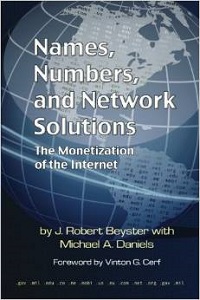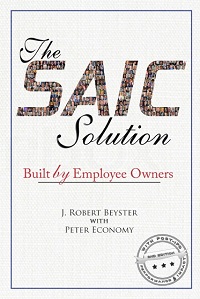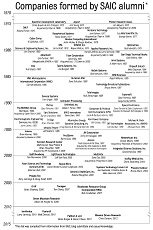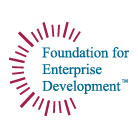New Book Plans, Sailing, and Life in General
4 Comments Published by Dr. Beyster June 4th, 2008 in Technology, The Book.We’re considering three new book-related initiatives through FED. The first one is a paperback version of The SAIC Solution. We will be talking with the publisher about that soon. The time scale on this is probably about a year, after we have sold the remaining stock of hardcover books. The second book is the story of Network Solutions — from the early days of the ARPANET, through to today. This book interests me greatly, although I fear that it will not be easy to write since there will be so many political constituencies which must be treated with an even hand to avoid hurt feelings. We will try to involve Emmitt McHenry, who started Network Solutions; myself; Mike Daniels, who discovered Network Solutions and did most of the negotiations on the acquisition. We will talk with Bill Roper, who now runs VeriSign, which acquired Network Solutions and now runs the registry. It’s one of the registrars, but not the only one. We have begun to set up a framework within which we can operate and with any luck the book will be done in about a year. The third book is Employee Owners Speak Out, which will initially be based on a series of articles submitted by former and current SAIC employees such as Bill Scott, Carl Albero, Jim Russell, Matt Tobriner, and any others who might like to contribute. This book will be dedicated to establishing convincingly the power of employee ownership from the employees’ perspective, which is unique. We will be providing additional details about this third book — and invite your participation — in a future blog posting.
I had an interesting long Memorial Day weekend. I spent some time with John Ellis and Bob Freedman discussing the new sailing adventure Craig Venter plans for later this year. We have given them some money to help plan the adventure, and the question now is if we want to participate more in future activities. As you know, I have taken an interest in genome research. If I could go with them part way on the trip, I might be able to have some fun while learning how to prepare samples along the way, which is suddenly interesting me. It’s not that I am no longer interested in the other topics I have studied all my life, it’s just that this new area of knowledge presents me with a new challenge and is an area where I would like to make a contribution.
This past week has been busy. I’ve spent my time doing some tasks that were very interesting, and some tasks that were kind of mundane. As for the interesting tasks, I spent Monday morning working with my daughter on the DARPA SBIR program, helping her examine — with the aid of some technology consultants — companies for development and transition funding by the government. We reviewed about 15 companies. There were companies that specialized in new power sources, ones that had new software algorithms, and others that offered new computer network security and intrusion detection technologies.
On the more personal side, I have been practicing for my driving test, which they don’t make easy for an 83 year old. Saturday night we attended a large event at the beach home of Saleh Hassanein and Zandra Rhodes. Saleh was celebrating his 87th birthday and he was alive and well with lots of enthusiasm. He spends a great deal of his time working with a wide variety of charities in San Diego and I know him through the Cardiovascular Center at UCSD, which has been very helpful to me.
Last Thursday Ron Arnold, Bill Proffer, and I took the boat to the Coronado Yacht Club and rented a cab which took us to the Brigantine Restaurant. Coronado is a tremendously beautiful place and I always like going there. It was a good adventure and very stimulating.
As for the mundane tasks, as I write this, I’m not sure how I’m going to get home today. Ralph’s car is broken and I didn’t drive mine because of a doctor appointment in the morning. I’ve learned, however, that things have a way of working themselves out. I have physical therapy this afternoon which I look forward to since it has such a profound effect on my physical well-being.
Now you know absolutely everything that’s happened with me in the last couple of weeks. We had more than 400 visits to this blog last week, but only one message. Why don’t you tell us what you are doing? It’s probably more interesting than what I just told you.
P.S. Since MA and Betty didn’t bring me back a nesting doll from Russia, I have discovered that a selection of nesting dolls is available through Amazon.com in case any of you are interested.





Dr. Beyster – if you do end up writing about the Network Solutions history, I can provide some assistance on the early Internet portion of the history. I was one of the principals on the NSFNET program (1986-1995). The NSFNET backbone succeeded the ARPAnet and NSF played a key role in the operational support of the DNS system where they administered at least one early contract that eventually became part of Network Solutions.
I attended the 20th reunion of the NSFNET program in Washington DC last November [see http://www.nsfnet-legacy.org/event.php where I participated on a panel on the development of the T3 (45Mbits/sec) network that was developed in the 1988-1991 timeframe and I chaired a panel on the future of the Internet. I also ran into George Strawn (NSF) at this conference who sends his regards.
Jordan: I’m glad you’re willing to help us with the new book. We’re going to need all the help we can get. If you have any ideas for the book, I would love to hear them. — Bob
Bob … I just finished reading your book “The SAIC Solution†and it brought back great memories of my almost 10 years with SAIC. Gil Stegen and I started up the Seattle office as one of your Greenhouse projects in 1976. As you indicated in your book, I was one of your perspective SAIC employees who you met with personally to convince me to join. Actually, you bribed me into joining by offering to finance my start-up fluid dynamics laboratory in Seattle … naturally your first question to me was, “Can you keep it funded?†And naturally I said yes. After being with the company for a few months, I was never quite sure that you were serious about building the facility until you called me one day and asked me where my proposal was and when I would be ready to begin the design and construction process. We hired Lee Piper to help me with the engineering design and Dennis Eyster to help with the instrumentation and data acquisition design. We completed the facility that year and over the next 9 years, I was able to keep the laboratory funded through various Navy, NSF and NOAA projects. The laboratory facility wasn’t a big money maker, but it was a good door opener for us and set us apart from most of our competitors. I was always very grateful for your support and confidence.
Your support was also there when we decided to pursue NOAA work in the Arctic. Our first contract was in the NE Gulf of Alaska, where we did the defining work that was later used to evaluate oil spill response scenarios for what was to become the Exxon Valdez impact area. With your approval, we made some strategic NOAA hires and over the next 8 years SAIC was able to competitively win most of the NOAA physical oceanography work in the Gulf of Alaska, Navarin Basin, Bering Sea, Chukchi Sea, and Beaufort Sea. Thanks to you and SAIC, I had a great time doing much of the early work in the Alaska Nearshore and was able to identify the processes working on the Arctic shelf that help maintain the deep Arctic thermocline (very important to maintaining the Arctic ice pack and greatly affected by global warming). We also usually had at least one photo of our annual Arctic exploits in the SAIC Annual Report.
I left SAIC in 1985 to do more integrated, multi-disciplinary environmental work, which was the new rage at the time. Thanks to the skills and confidence that I developed at SAIC, I was able to immediately help secure a $10M field program in the Beaufort Sea at my new company even though they had never done any work in the high Arctic. I stayed with that company for 18 years and eventually became the National Director for Water and Natural Resources and Operations Manager for the Seattle Office. About five years ago I joined Battelle Memorial Institute as Operations Manager in the Seattle office and was Associate Director of the Battelle Marine Sciences Laboratory in Sequim, WA when I retired last year. In reading your book, I realized how much of what I learned at SAIC helped me in my later years. I learned to plan for and never be afraid to go after what I wanted and to always listen to and encourage young scientists to reach their individual potentials. Oh yes, I also learned to keep my time sold high.
Thanks Bob.
Lon Hachmeister
Newburyport, MA
Lon: I really appreciate your detailed blog posting on June 12th. I have wondered what’s going on with the many fine people that made our Seattle office a success — where they are and what they are doing. It looks like you were in a position to do some very interesting work in Seattle — not with SAIC, but with the Battelle Memorial Institute. I suspect you have maintained contact with Gil Stegen. I haven’t heard from him in a while. Another ex-SAIC member — Gael Tarleton — is a new port commissioner in Seattle . We helped support her campaign. If you don’t already know Gael, you might enjoy talking with her. For all I know, the three of you may have already been getting together planning your futures. Best wishes to all ex-SAIC members in Seattle . If you have any interesting SAIC stories you would like to share, please send them to me. We may in the future create a new edition of The SAIC Solution and we will try to incorporate as many of these stories as possible. — Bob